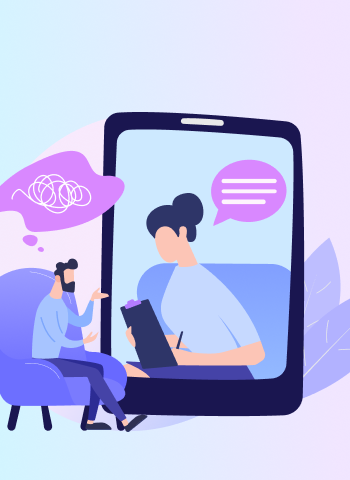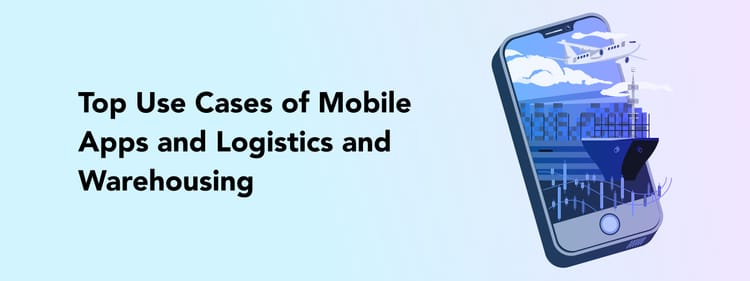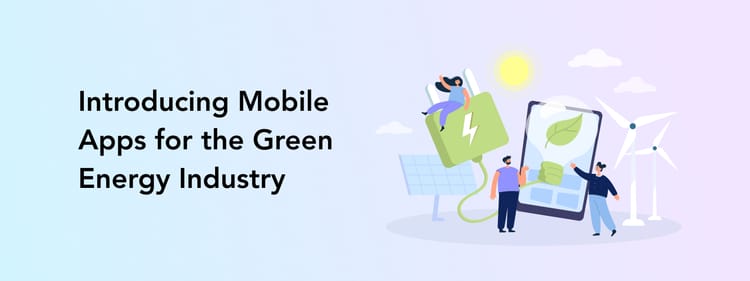The developer wrote the last line of code. The QA specialist gave the green light for the app’s release. All is ready for the big release day. But wait a minute, there is still one little task ahead of you and your development team: getting the necessary Apple App Store and Google Play certifications.
Without those, app marketplaces simply won’t accept your app.
This article explains what the App Store and Google Play guidelines are, which parameters they evaluate, how to prepare your app for submission in a few steps, and why app marketplaces can reject your application. Plus, we are sharing a free app release checklist.
What are App Store and Google Play Guidelines?
Both Apple and Google have a careful selection process for the apps they present in their marketplaces. Before any application makes it to either the App Store or Google Play, it undergoes a careful review process when it is evaluated based on a set of criteria concerning its technical performance, design, and contents.
Only apps that meet these criteria are accepted to be uploaded to the marketplaces and downloaded by the public.
App Store’s App Guidelines
The Apple App Store has five main parameters regarding the app’s suitability for publication.
These are
- Safety
- Performance
- Business
- Design
- Legal
Each of these parameters has a set of requirements.
- Safety includes objectionable content (offensive or harmful content), data safety, kids category, and other requirements
- Performance includes app completeness, beta testing, accurate metadata, hardware compatibility, and software requirements
- Business includes payment regulations, like in-app purchases and subscription rules, and other business model requirements
- Design includes plagiarism cases, minimum UI functionality requirements, extension and icons parameters, etc
- Legal includes regulations on privacy, intellectual property, gaming/gambling, VPN apps, mobile device management, and explains developer's code of conduct.
Any iOS UI/UX designer and app developer should be well-informed about these requirements. Many of them can be followed automatically and intuitively in the design&development process.
At the same time, it’s a must for your QA specialist to run the app through Apple’s guidelines before submitting it for publishing to avoid resubmissions and late remakings of the app.
Google Play App Guidelines
Google’s Google Play has a set of requirements for Android apps to be published on the platform.
The main Google Play policies are
- Restricted content explains the terms of operating content and lists types of content the apps cannot include based on regional policies, like real-money gambling, financial activities, blockchain-based content, child engagement, etc
- Impersonation policy forbids developers to copy other apps or pretend to be someone else
- Intellectual property prevents unfair use of other’s work
- Privacy, deception, and device abuse discusses how your app can use the network, device, and personal data ethically
- Monetization and ads lists the supported app monetization models like in-app ads or paid app distribution
- Store listing and promotion describes how to avoid spammy store listings, low-quality promotion, and artificial app visibility boosting
- Spam and minimum functionality regulates the minimum requirements for app’s performance and user experience
- Malware describes prohibited codes that might put users and their devices at risk
- Mobile Unwanted Software (MUwS) regulates unwanted app characteristics like tricking users into installing additional software, affecting the user’s system in an unexpected way, or collecting private information
- Families describes how to make your app targeting children compliant with current regulations
- Other programs lists compliance for additional Android experiences, like Android Emoji policies
- Enforcement explains how policies apply and how developers can manage policy violations
These guidelines are mostly concerned with safety and privacy, so if your app is not plagiarized or breaks user data privacy, it should be relatively easy to obtain Google Play’s approval.
How to Submit an App to the App Store
Meeting all the App Store’s requirements is half of the job done. The very app submission is an intricate process that requires understanding the App Store’s app information policies and necessary certificates.
Step 1: Add the app to App Store Connect
You need a paid Apple Developer account to upload your app for a review. If you don’t have one, your development team can handle it.
You or the developer must register a new App Store Connect app. The system will ask about the app’s
- Application name
- Platforms (iOS, macOS, iPad, watchOS)
- Primary app language
- Bundle ID (it has to match the identifier in the Info.plist Xcode project file)
- Stock Keeping Unit (SKU) (works as an app identifier that is not visible to users)
- User access (select who can access the app)
Just like that, you filled in all the basic app information.
Step 2: Fill in the App Store Product Page information
Any app has to come in with a set of additional information to be displayed on its App Store page, such as
- App name
- App icon
- Short app description or promotional text
- Screenshots from the app (up to 10) to show the app’s UI
- Short description of the app’s features
- Keywords for your app to be discoverable through search
- Support URL (a website or social media page for users to contact if they need help)
- Marketing URL (a website or social media page with information about the app)
- Privacy policy URL (a link to your privacy policy)
- App preview (short video promoting the app and showcasing its features; optional)
- In-app purchases information
- App category
- Copyright
Please note that screenshots and videos need to match certain screen specifications, depending on the current iOS version.
Step 3: Submit the app for review
Double-check all the information you provided and set the app’s state to Prepare for submission. It will take around 24-48 hours for Apple to review your app.
How to Submit an App to the Google Play
Step 1: Create the application
To be able to submit an app to Google Play, you need a paid Google Play Console account. You might also need to set up a merchant account if your app has in-app purchases.
Next, you can click on the Create application button and add the title of your app. Plus, you will select whether your product is an app or a game and whether it’s free or paid. You can change this information later, too.
Step 2: Add the app’s file to the Play Store
You can upload the app bundle or APK file to the App Release page. It’s best if you transfer your app’s APK file to a bundle format that will be automatically optimized for a variety of device configurations and reduce the size of your app. The platform will offer you to test the app before the release.
You will also sign your app with an upload key that can be generated in the Android Studio. It is a unique developer identifier.
If you don’t know how to do it, ask your Android developer to take care of the app publishing task. It will be more time-effective and reliable than trying to take care of it alone, especially if you never uploaded apps to Google Play before.
Step 3: Fill in the app information
You have to add information to your application’s Play Store page. You can do so in the Store Listing in the app’s dashboard on Play Console.
The information should include
- App name (up to 30 characters)
- App’s short description (up to 80 characters)
- App’s full description (up to 4000 characters)
- Preview assets, such as screenshots (2 to 8) and videos showcasing the app’s features
- App information in other languages, localized images and videos, if any
- App categories and tags
- Developer’s contact information (email address, website, etc)
After filling in all this information, you can proceed with setting up your app’s age and regional restrictions and pricing.
Step 4: Fill in the Content Rating questionnaire
The Content Rating section includes a questionnaire that will be used for rating your app in the Play Store based on its age appropriateness and other legal requirements, like blocking it on certain territories.
Step 5: Set up your app pricing
You will need to select whether your app is free or paid in the Pricing and Distribution tab. Plus, you have to select whether your app is primarily targeted at children.
Step 6: Submit your app for a review
After working your way through all the app settings and descriptions, you can now request to review and publish it by clicking Review and Roll out to production. It usually takes a few hours for Google to review an application.
Why Can the App Store or Google Play Reject Your Application?
There are several reasons why your app might not be approved by the App Store or Google Play on the first attempt. These include
- Poor app performance: If your app crashes at launch, has bugs and glitches, loads slowly, and so on, it cannot meet the platforms’ quality standards. That’s why proper testing before launching your product is a must
- You don’t have clear user data policies: Both Apple and Google have strict data usage rules and don’t allow any apps without data policies
- App contains forbidden content: Depending on the regional policies, you might not be able to publish a gambling or online casino app, application using cryptocurrencies, and so on
- Your app lacks metadata: Reviewers will check your app for its metadata, like age rating, app description, and screenshots. If some elements are missing, you won’t be able to proceed with publishing the application
- UI doesn’t meet standards: Apple requires all of its apps to follow Human Interface Design standards, and Google asks to follow Material Design rules. If your app’s UI doesn’t match the best practices, it is not considered user-friendly and won’t be approved
- Your app isn’t compatible with the device or operating system: Reviewers will be checking your app’s performance on the newest OS, and if your app doesn’t run on it or the users face issues, you need to adjust the app to the newest version. The same goes for device compatibility, like matching the screen size. For example, an iOS app has to run on iPads too. Another reason can be hardware performance issues like the app draining the battery too much or heating up the device.
- Payment system issues: Any payment has to go through an official in-app payment gateway. Trying to use other ways, like payments through your website, is not allowed.
- Insufficient feature set or content: Both platforms do not allow apps that do not have sufficient standard features, do not possess any value for a user, have content placeholders (nonsense text like Loren Ipsum for actual content to be added later), or whose functionality can be easily replaced by a website.
It is important to address any potential issues even before starting the development process. Such problems as an insufficient feature set or technical issues come from the gaps in the UI/UX design or development. Plus, an inexperienced team can be a great obstacle to making it into the App Store or Google Play from the first attempt.
Choose Perpetio as Your Trusted Partner
Perpetio is a reliable mobile app development company. We have helped more than 150 clients with bringing their app ideas to life. We know how to build apps and submit them to Google Play and App Store with no issues. Overall, our apps have been downloaded more than 10 million times.
Let’s make your product a success story — 16 of the apps developed by Perpetio made it to the top 100 of the App Store and Google Play.
Contact us for a free project quote.
A 12-Point Checklist for a Successful App Release
As we promised, here is a pre-release checklist for a successful app submission.
- Test your application for crashes and overall performance
- Make sure your app follows Human Interface Design guidelines for iOS and Material Design for Android
- Double-check the app version, file compatibility, and device support (do you have a wearables device app, iPad version, etc)
- Check for all the standard UI elements
- Add the privacy policy
- Make sure you have all the app’s metadata (title, descriptions, keywords, and screenshots)
- Update your contact information so a reviewer can reach out to you
- Enable all the backend features and third-party services before submitting the app
- Provide full access to all of your app’s features, including the paid ones (you can create a demo account or go into demo mode)
- Add notes with detailed documentation on the app’s features and in-app purchases if needed (if your features are not obvious)
- Keep in mind your app’s age restriction and category to fill it in later
- Set up a developer account and pay for it (alternatively, ask your development team to submit your app
This checklist will help you fully prepare for the app publication and avoid resubmissions.





